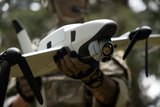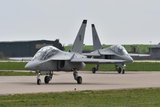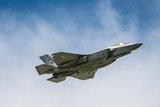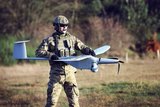Japan Maritime Self-Defense Force selects General Atomics MQ-9B SeaGuardians
The MQ-9B is an upgraded variant of the MQ-9A designed for ISR missions. (Photo: GA-ASI)
The Japan Maritime Self-Defense Force (JMSDF) has chosen General Atomics Aeronautical Systems’ (GA-ASI) SeaGuardian aircraft system as part of its long-endurance uncrewed aerial vehicle programme.
The SeaGuardian system has already been used by the JMSDF since General Atomics was selected in 2023 as part of its Medium-Altitude Long Endurance (MALE) UAS project. It has also been deployed by the JMSDF for evaluation which include tests to see if uncrewed aircraft can replace some missions currently carried out crewed aircraft.
As noted by GA-ASI, MALE UAS can fly for 24h or more, depending on configuration.
According to the Naval News, a source from the JMSDF confirmed that 23 SeaGuardian systems will be acquired by 2032. The first SeaGuardian is apparently scheduled for 2028, although no deployment site has been chosen.
Based on a comparative maritime programme, Shephard estimates the procurement could cost US$1.2 billion.
GA-ASI has already strengthened its Maritime Wide Area Surveillance system for Japan with Optix+, a software suite which gathers information using SeaGuardian sensors and correlates and exploits collected data.
According to GA-ASI, the SeaGuardian features two multi-mode maritime surface search radars with an Inverse Synthetic Aperture Radar imaging mode, an Automatic Identification System receiver and a High-Definition – Full-Motion Video sensor. The latter sensor is equipped with optical and infrared cameras as well as electronic intelligence receivers.
Related Equipment in Defence Insight
More from Air Warfare
-
![Denmark to bolster maritime defences as P-8A FMS deal approved by US]()
Denmark to bolster maritime defences as P-8A FMS deal approved by US
The NATO country continues to focus on building up its maritime surveillance and enforcement capabilities as part of a major investment in its Arctic defences.
-
![Spain moves ahead with transport, intelligence and training aircraft modernisation efforts]()
Spain moves ahead with transport, intelligence and training aircraft modernisation efforts
Confirming its C295 order in late December, the Spanish Ministry of Defence also awarded Airbus with its Hurjet procurement contract and both Airbus and Indra with a contract to investigate a proposed Signals Intelligence aircraft solution by 2028.
-
![December Drone Digest: Germany, Australia and US champion indigenous UAV production]()
December Drone Digest: Germany, Australia and US champion indigenous UAV production
One of the key trends seen in December has been the rise in indigenous investment within the UAV market, particularly across certain countries, with Germany, Australia and the US focusing on their commitments to sovereign development.
-
![What might next-generation military aircrew training look like?]()
What might next-generation military aircrew training look like?
Changing roles for combat aircraft fleets, the rise of simulation and LVC technologies, and the increasing cost of flight hours could all be leading to a paradigm shift in military pilot training.
-
![2025 air market review: European defence independence, next-gen tech and export concerns dominate]()
2025 air market review: European defence independence, next-gen tech and export concerns dominate
This year’s (geo)political turmoil has challenged many long-prevailing assumptions, leading to far-reaching consequences for air forces and their supplier bases in industry worldwide – with five key trends in review for 2025.
-
![Poland air report: Drones, transport aircraft and tankers dominate potential procurement plans]()
Poland air report: Drones, transport aircraft and tankers dominate potential procurement plans
With a rising defence budget and equipment list, Poland’s air market is set to grow as the country continues to modernise its transport and helicopter fleets while seeking out uncrewed aerial vehicles and loitering munitions.























